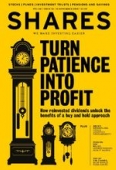Archived article
Please note that tax, investment, pension and ISA rules can change and the information and any views contained in this article may now be inaccurate.
'How does pension tax relief work?'

Alan from Wimbledon
Can you explain exactly how pension tax relief works? I’ve seen some stories saying people in ‘net pay’ schemes might not get anything, but others say you get it at your marginal rate – but I’m not really sure what this means! Any help appreciated!
Tom Selby, AJ Bell senior analyst, replies:
Firstly, don’t worry – you’re not alone in getting in a bit of a tangle about the mechanics of pension tax relief. But once you get your head round it the system is actually fairly simple for most people.
Receiving tax relief at your ‘marginal rate’ just means getting back whatever income tax you paid.
It’s probably easiest to illustrate this with an example. Let’s imagine someone has total taxable earnings of £46,400 in 2018/19. The basic-rate tax band is currently £46,350, meaning this person is only just a higher-rate taxpayer (with £50 of their earnings taxed at 40%).
If they make a £40 contribution into a SIPP, that contribution will automatically be increased to £50 when basic-rate tax relief (20%) is added automatically by their provider.
Note here it’s 20% of the total amount that goes into the pension or ‘gross’ contribution, rather than 20% of the amount they put in initially. They can also claim back an extra 20% (£10) through their tax return, meaning the £50 SIPP contribution has only cost
them £30.
If they had paid £100 gross into their SIPP rather than £50, only half of that contribution would have received higher-rate tax relief, with the other half getting basic-rate relief.
In practical terms, that means the £100 contribution would have cost them £70 in total. If the entire contribution had been granted tax relief at the higher rate, they’d have been able to claim back an extra £10 – meaning it would have cost them just £60.
On your second point, you are right that there is an issue for some members of so-called ‘net pay’ pension schemes. These work differently to ‘relief at source’ pensions (such as the SIPP example described above) because contributions are taken automatically from salary, meaning you don’t have to claim anything back from HMRC.
The issue you highlight mainly affects people who are automatically enrolled into net pay schemes. Under government rules anyone earning £10,000 or more should be auto-enrolled into a pension scheme by their employer.
However, because the basic-rate tax band doesn’t start until you earn over £11,850 anyone in a net pay scheme earning between £10,000 and £11,850 won’t get tax relief added to their fund automatically (although they can make a claim to HMRC).
This is not the case in relief at source schemes, where tax relief is added automatically.
DO YOU HAVE A QUESTION ON RETIREMENT ISSUES?
Send an email to editorial@sharesmagazine.co.uk with the words ‘Retirement question’ in the subject line. We’ll do our best to respond in a future edition of Shares.
Please note, we only provide guidance and we do not provide financial advice. If you’re unsure please consult a suitably qualified financial adviser. We cannot comment on individual investment portfolios.
Important information:
These articles are provided by Shares magazine which is published by AJ Bell Media, a part of AJ Bell. Shares is not written by AJ Bell.
Shares is provided for your general information and use and is not a personal recommendation to invest. It is not intended to be relied upon by you in making or not making any investment decisions. The investments referred to in these articles will not be suitable for all investors. If in doubt please seek appropriate independent financial advice.
Investors acting on the information in these articles do so at their own risk and AJ Bell Media and its staff do not accept liability for losses suffered by investors as a result of their investment decisions.

 magazine
magazine








